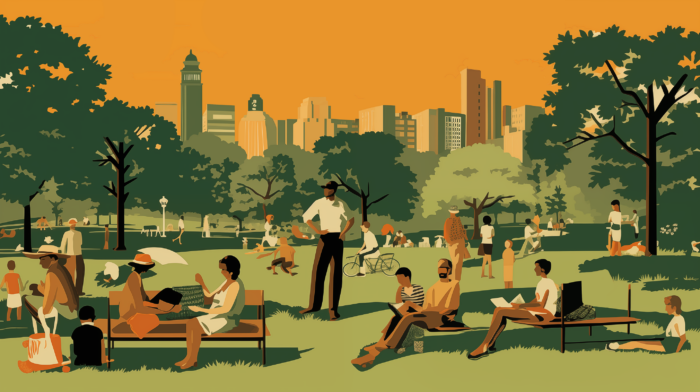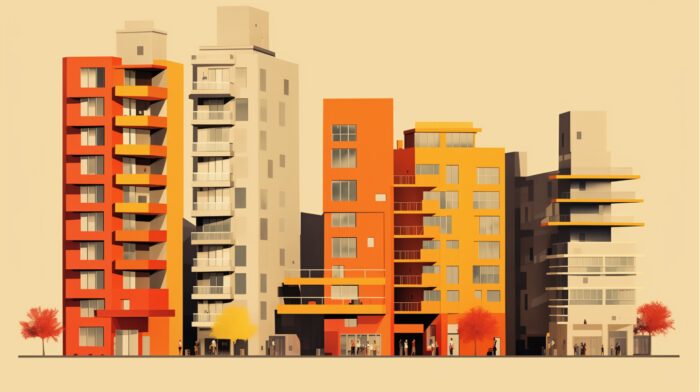If you have questions or want to learn more, please fill in the form or send us an email at:

The Opportunity Cost of McMansionization in the Los Angeles Metro
It is well known that the Los Angeles metro faces a severe housing supply shortage and affordability crisis. What is less understood is that as housing pressures build, older, smaller, and affordable single-family homes are increasingly being replaced with larger (averaging 4,800 sq. ft.) and significantly more expensive (averaging $3.2 million in 2022) houses, commonly known as McMansions. This trend exacerbates housing affordability issues. Fortunately, there is a viable alternative: Allowing a moderate increase in units per parcel can help reverse this trend and improve housing affordability in the region.
The Extent of McMansionization in the LA Metro
McMansionization is widespread across the Los Angeles metro area, with its pace accelerating in recent years. The proportion of single-family homes with a gross living area (GLA) exceeding 3,400 square feet has been steadily increasing since the 1950s. By 2020 (the latest year available due to data latency), 37% of newly built single-family homes were such McMansions.
In the more affluent cities within the metro area – such as Beverly Hills, Manhattan Beach, Newport Beach, Santa Monica, Arcadia, and Temple City – the trend has been even more pronounced. In these cities, 66% of newly built single-family homes were McMansions in 2020, reflecting an earlier and faster increase in McMansionization.

While about one-third of these McMansions have been constructed on previously undeveloped land, the majority involve the conversion of older, smaller, and more affordable homes. Take, for example, a modest 830 sq. ft. starter home built in 1949 in Manhattan Beach. Valued at around $1.6 million in 2015, this home was demolished by 2018 and replaced with a sprawling 4,900 sq. ft. McMansion, which is now valued at approximately $3.8 million.
An example of a McMansion conversion at 1450 23rd St., Manhattan Beach, CA

Such conversion cases are not exceptions but rather the norm, highlighting the significant impact of McMansionization on the affordability of housing in these neighborhoods. In the LA metro area, nearly 12,000 units have been converted since 2012, accounting for over 1 out of every 4 single-family homes built during this period. In affluent cities such as Arcadia, Beverly Hills, and Santa Monica, every home built since 2012 has been a McMansion conversion. The median value of these McMansion conversions is $3.2 million.
McMansionization has become prevalent in many neighborhoods. The first map from the AEI Housing Center illustrates the prevalence of McMansionization across the LA metro at the census tract level. Darker colors indicate a higher concentration of McMansions (those built since 2011). This is most prevalent along the coastline and in areas like Santa Monica and Beverly Hills, where high land prices make it easier to justify a teardown McMansion conversion.
Map: McMansion Prevalence in the Tree Section neighborhood in Manhattan Beach

The second map zooms in on the Tree Section neighborhood in Manhattan Beach, where older homes have already been replaced by McMansions (marked in red) and most others are at high risk of future McMansionization (marked in orange).
Map: McMansion Prevalence in the Tree Section neighborhood in Manhattan Beach

Understanding McMansionization
McMansionization is not the root cause of the housing affordability crisis; rather, it is a symptom of it. This phenomenon can be explained by basic urban land economics. The value of a property is composed of both the physical structure and the land it occupies. For new housing, land typically accounts for about 20% of the property’s value, but this share is not static. When new amenities are introduced, when preferences for certain locations increase, or when land becomes scarcer, the land share of a property’s value rises, indicating that the land is too valuable to support a modest structure.
When the land share exceeds approximately 60%, developers or homeowners may seek to reduce the land share to a more typical level. However, existing zoning laws that restrict most areas to single-family homes often leave them with only one viable option: tearing down the existing structure and constructing a McMansion.
This process exacerbates housing affordability in one of the least affordable metro areas in the country. McMansions remove lower-priced units from the housing market, replacing them with homes that sell for two to three times as much. Once a McMansion is built, it typically remains in place for decades, effectively locking in that land use and preventing the development of multiple, more affordable units on the same parcel.
In response to growing backlash against McMansions, some cities have attempted to restrict their construction. However, a more effective approach would be to allow a moderate increase in the number of units permitted per parcel. If zoning laws permitted this, builders could lower the land share by demolishing the existing structure and replacing it with a series of townhomes.
In Seattle, where developers have the option to pursue either strategy, our case study found that builders often prefer constructing four townhomes, each priced at around $1 million, rather than a single $3 million McMansion. While constructing McMansions should remain an option, building multiple units is often preferable. For prospective homebuyers, it creates three additional housing units at a price point comparable to that of the original, more modest home. For builders, it offers greater profit potential with less risk, as it is often easier to sell these more modest homes. And for the city, this approach increases the total assessed value of the property, resulting in higher tax revenues.
The Opportunity Cost of McMansionization
The opportunity cost of McMansionization is substantial, especially in the Los Angeles metro area, where approximately 163,200 homes are currently at risk of being converted into McMansions. These homes, typically built in the 1950s, have an average GLA of 2,100 sq. ft., are situated on 9,300 sq. ft. lots, and are valued at around $1.8 million.
Economically and physically, these large lots are well-suited for redevelopment into multiple units. If zoning regulations allowed for up to eight units per lot, these properties could significantly boost the housing supply. The conversion process is expected to occur gradually, with approximately 2% of these at-risk properties being redeveloped each year. Over a decade, this approach could yield up to 146,000 new housing units (see table). This approach would enhance housing affordability by providing more homes at accessible price points, especially in neighborhoods where current trends do not add to the housing stock.
Unlike McMansions, which cater primarily to a small, affluent demographic, this shift would significantly improve housing affordability in two ways. First, it would facilitate the construction of numerous smaller, more affordable townhomes. Our estimates suggest that these new townhomes would be priced between $1.1 and $2.2 million, making them accessible to a broader segment of the population. Second, by expanding the overall housing supply, this strategy would allow older, existing units to “filter down” and become more affordable over time. Allowing for moderately greater density would thus particularly benefit moderate-income, younger, and more diverse households, including first responders, teachers, and firefighters—groups that are often priced out of the communities they serve.
A Path Forward
Seattle offers a compelling example of how allowing moderate increases in density – even in just a part of the city – can successfully transform large lots into multiple townhomes, aligning the metro area’s need for more housing with developers’ goals of profitability. This approach also benefits cities by expanding the tax base and increasing revenue. The longer cities in the Los Angeles metro area delay adopting similar policies, the more potential housing opportunities will be lost to McMansionization.
Zoning laws can and should be adjusted, as demonstrated by California’s progress with Accessory Dwelling Units (ADUs). California’s experience highlights the critical importance of removing local regulatory barriers, which initially impeded ADU construction despite a 1982 law intended to allow them. However, recent legislation, particularly since 2016, has effectively reduced these barriers, leading to a significant increase in ADU construction.
Despite this progress, challenges remain. Senate Bill 9, which took effect in 2022, requires municipalities to approve two primary dwelling units on single-family lots and allow urban lot splits. However, it has faced legal challenges, with a recent ruling declaring it unconstitutional. This setback underscores the urgency for cities in the Los Angeles metro to quickly adopt policies that allow for more units per parcel.
The opportunity cost of continuing with McMansionization in the Los Angeles metro area is significant. Without proactive policies that encourage greater density, the trend toward building McMansions will likely persist and even accelerate as property and land values rise. This will further exacerbate housing affordability issues and increase displacement, particularly for low- and moderate-income and diverse households.
In conclusion, by following Seattle’s example and adjusting zoning laws to encourage higher-density developments, Los Angeles and its surrounding cities can better meet their housing needs while also supporting economic growth and equity in the region.
For more information and tools to explore housing opportunities in other parts of the country, visit the AEI Housing Center’s HEAT Toolkit and the McMansion Map.



